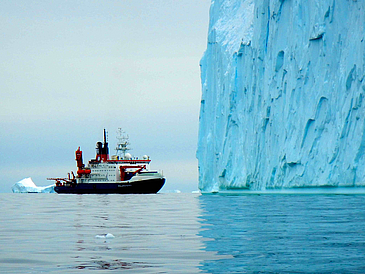Antarctica was not always an isolated, ice-covered land mass. Until about 100 million years ago, it constituted the central part of the supercontinent Gondwana. After Gondwana’s breaking up, Antarctica established itself as an independent continent. Despite its south polar location, temperate climate conditions prevailed in Antarctica until the end of the Eocene around 34 million years ago, and the continent was covered by extensive river systems. Researchers from the University of Bremen and the Alfred Wegener Institute, Helmholtz Centre for Polar and Marine Research, together with German, British, Irish, and Swedish universities and research institutes, have now discovered the largest of these river systems and described their findings in the Science Advances journal.
The team examined sediment samples, which they obtained from the Amundsen Sea off the West Antarctic coast during an expedition onboard the research icebreaker Polarstern. Their analyses show that most of the minerals and rock fragments in these samples do not derive from West Antarctica, but from the Transantarctic Mountains on the edge of East Antarctica, thousands of kilometers away. This mountain range has been uplifting since the late Eocene as the steep shoulder of a continental rift, the West Antarctic Rift System, which today divides Antarctica into the two land masses of East and West Antarctica.
Uplift and erosion of the Transantarctic Mountains have since produced large quantities of erosion debris, which the newly discovered river transported over a distance of more than 1,500 km through the West Antarctic Rift System into what is now the Amundsen Sea, and deposited it there in a swampy river delta. Modern examples of large river systems in a similar geological setting are the Rio Grande in the eponymous rift or the Rhine in the Upper Rhine Graben.
Professor Cornelia Spiegel from the University of Bremen explains: “The existence of such a transcontinental river system shows that – unlike today – large parts of West Antarctica must have been located above sea level as extensive, flat coastal plains.” Due to the low topography, West Antarctica was still ice-free at the end of the Eocene, while the mountainous regions of East Antarctica were already beginning to glaciate.
Further Information:
https://www.science.org/toc/sciadv/current
Contact:
Prof. Dr. Cornelia Spiegel
Faculty 05: Geosciences
University of Bremen
Phone: +49 421 218-65280
Email: cornelia.spiegelprotect me ?!uni-bremenprotect me ?!.de

